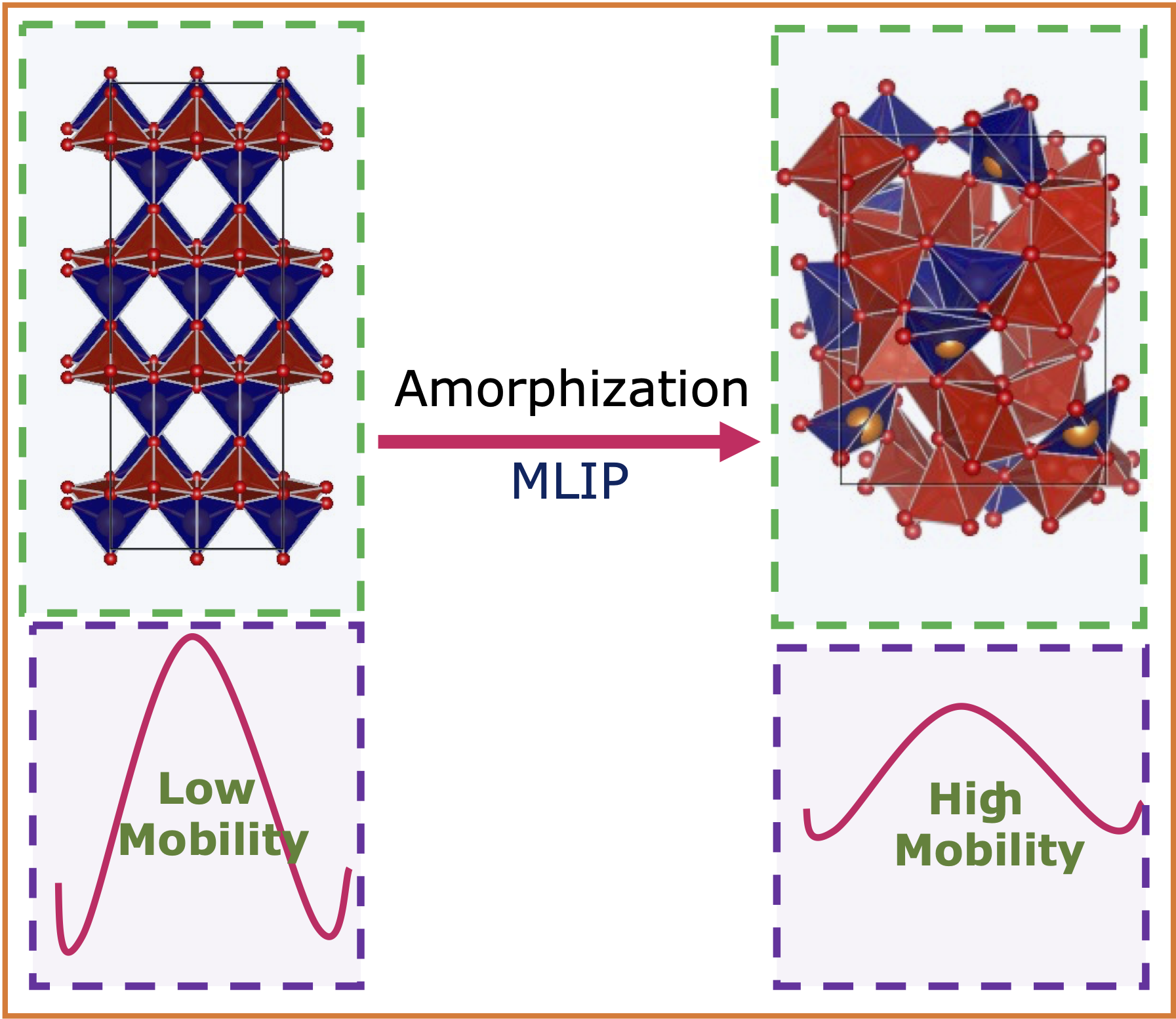Abstract
Development of energy storage technologies that can exhibit higher energy densities, better safety, and lower supply-chain constraints than the current state-of-the-art Li-ion batteries (LIBs) is crucial for our transition into sustainable energy use. In this context, Mg batteries (MBs) offer a promising pathway to design energy storage systems with superior volumetric energy densities than LIBs but require the development of positive electrodes (cathodes) exhibiting high energy and power densities. Notably, amorphous materials that lack long range order can exhibit `flatter’ potential energy surfaces than crystalline frameworks, possibly resulting in faster Mg2+ motion. Here, we use a combination of ab initio molecular dynamics (AIMD), and machine learned interatomic potential (MLIP) based calculations to explore amorphous V2O5 as a potential cathode for MBs. Using an AIMD-generated dataset, we train and validate moment tensor potentials that can accurately model amorphous (Mg)V2O5. Due to the amorphization of V2O5, we observe a 10-14% drop in the average Mg intercalation voltage − but the voltage remains higher than sulfide Mg cathodes. Importantly, we find a ∼seven (five) orders of magnitude higher Mg2+ diffusivity in amorphous MgV2O5 than its crystalline version (thiospinel-MgxTi2S4), which is directly attributable to the amorphization of the structure. Also, we note the Mg2+ motion in the amorphous structure is significantly cross-correlated at low temperatures, with the correlation decreasing with increase in temperature. Thus, our work highlights the potential of amorphous V2O5 as a cathode that can exhibit both high energy and power densities, resulting in the practical deployment of MBs.
